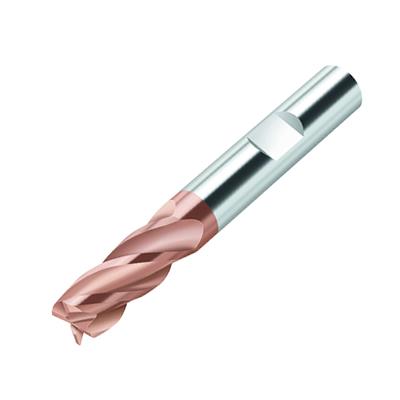
Walter has added to its range of solid-carbide milling cutters with the introduction of its MC232 Perform product line. This versatile, cost-effective new cutter type is available with 2, 3 or 4 flutes, in a diameter range of 1/8 in. to 5/8 in. (2 to 20 mm).
Smaller diameters are offered with cylindrical shank and larger diameters with a Weldon shank of higher horsepower cutting. This marks the first time that solid-carbide milling cutters have been included in the Perform line from Walter. The MC232 is designed to be highly economical and suitable for use in a wide range of applications, which is a key advantage for shops that frequently machine smaller quantities. The properties of the new MC232 Perform milling cutters are particularly beneficial for users whose top priority is the universal applicability of their tools, meaning one tool is appropriate for a large range of material types. rather than simply tool life.
Universal applicability is also mirrored in the technical features of the MC232 Perform milling cutters. Thanks to their geometry with center cutting capability, 35° spiral, their WJ30ED grade, these new shoulder/slot milling cutters are suitable for all common milling operations such as lateral milling, full slotting, pocket milling, ramping and helical plunging. They can be used in industries ranging from mechanical engineering, mold and die, to the automotive and energy industries.
Contact Details
Related Glossary Terms
- flutes
flutes
Grooves and spaces in the body of a tool that permit chip removal from, and cutting-fluid application to, the point of cut.
- gang cutting ( milling)
gang cutting ( milling)
Machining with several cutters mounted on a single arbor, generally for simultaneous cutting.
- milling
milling
Machining operation in which metal or other material is removed by applying power to a rotating cutter. In vertical milling, the cutting tool is mounted vertically on the spindle. In horizontal milling, the cutting tool is mounted horizontally, either directly on the spindle or on an arbor. Horizontal milling is further broken down into conventional milling, where the cutter rotates opposite the direction of feed, or “up” into the workpiece; and climb milling, where the cutter rotates in the direction of feed, or “down” into the workpiece. Milling operations include plane or surface milling, endmilling, facemilling, angle milling, form milling and profiling.
- shank
shank
Main body of a tool; the portion of a drill or similar end-held tool that fits into a collet, chuck or similar mounting device.
- slotting
slotting
Machining, normally milling, that creates slots, grooves and similar recesses in workpieces, including T-slots and dovetails.

